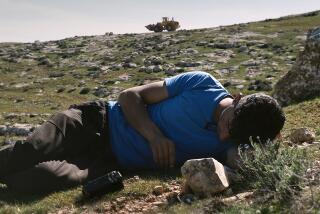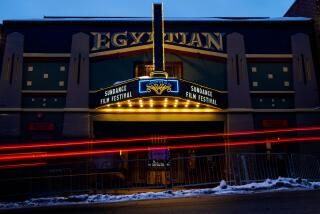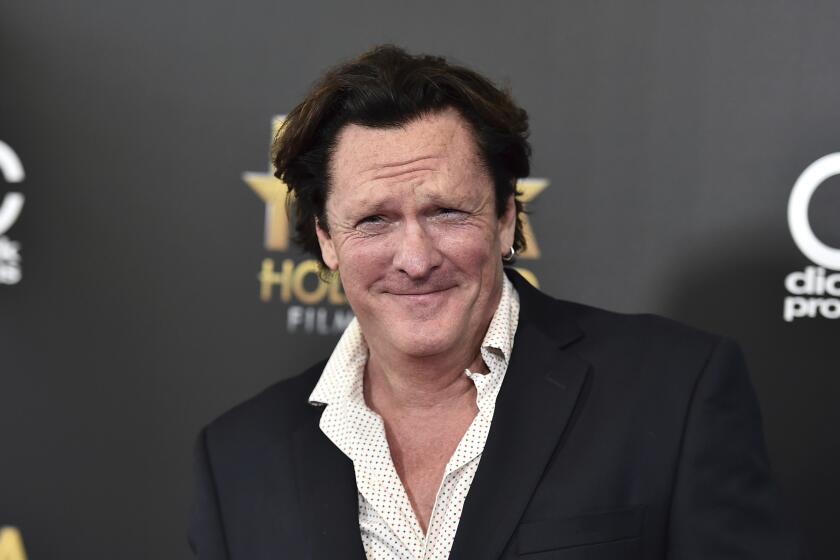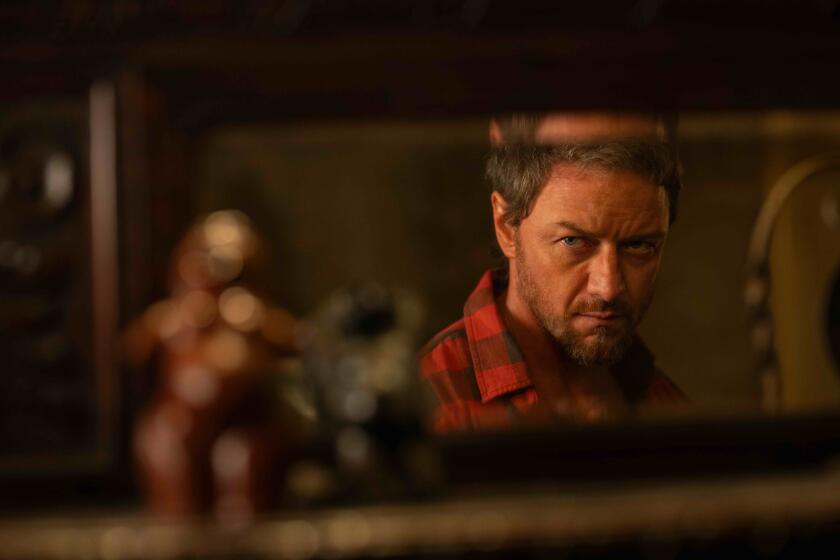Doing whatever it takes for a spot at Sundance Film Festival
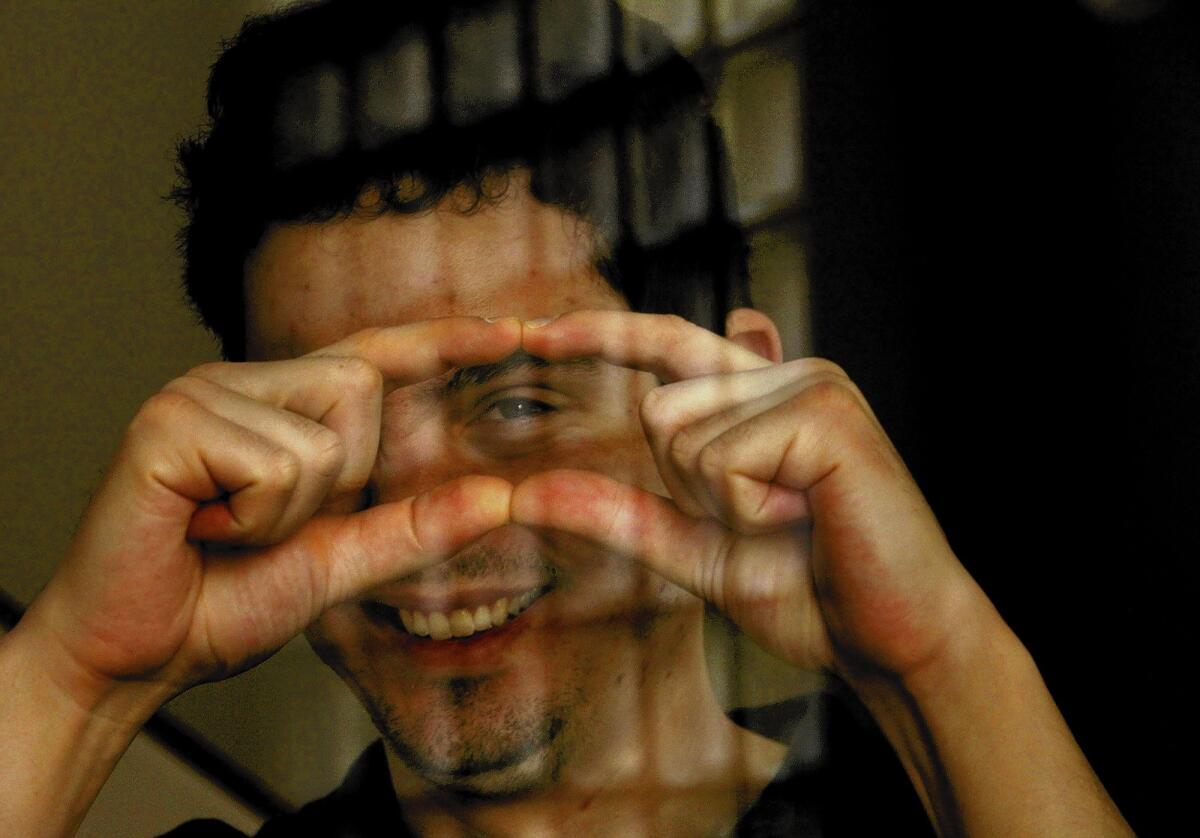
There’s a small but established tradition of Sundance Film Festival directors turning their festival shorts into full-length Sundance features. But few in the 30-year history of the nation’s top showcase for independent film had successfully attempted what Damien Chazelle was trying to do last fall.
After winning the short film jury award at last January’s Sundance festival with “Whiplash,” the 28-year-old writer-director was determined to convert the 18-minute look at a jazz drummer at an elite music conservatory into a full feature for this year’s Sundance.
Chazelle’s timetable was its own whiplash: To meet even generous extensions of festival deadlines, Chazelle had to shoot and edit the full-length feature in about nine weeks — roughly one-third the time needed to put together an average movie. With no time to spare, Chazelle at one point staggered back to his Los Angeles set to keep shooting hours after suffering a concussion in a traffic accident.
LIST OF SUNDANCE SELECTIONS: U.S. and World Cinema dramatic competition
Sundance, which kicks off Thursday, is the nation’s top festival for movies made outside the studio system. Robert Redford’s brainchild has helped launch the careers of numerous directors, including Steven Soderbergh, Quentin Tarantino and David O. Russell. Distribution deals can top $10 million, and Academy Award winners like “Little Miss Sunshine” can begin their awards march in the snow of Park City, Utah.
It’s no surprise then that filmmakers such as Chazelle will go to extraordinary, health-jeopardizing extremes — abetted by advances in digital filmmaking — to join the fold. But the race to squeeze past festival deadlines means that Sundance programmers are now reviewing movies so unfinished they have missing dialogue, music and scenes.
“Sometimes you can’t even judge it,” said John Cooper, the festival’s director, whose staff reviewed 4,044 feature-length films submitted for this week’s festival, which will show 115 movies in this year’s gathering.
Inside downtown Los Angeles’ Palace Theater, where “Whiplash’s” sets had been dressed to resemble a New York conservatory like the Juilliard School, the production was shooting late on a Saturday night, and the crew didn’t go home until 4 a.m. Sunday. After filming wrapped and Chazelle raced to cut the movie, editors grabbed naps on couches, sound mixers lunched in hallways, coffee machines churned out endless lattes and almost everybody got sick.
BEST MOVIES OF 2013: Turan | Sharkey | Olsen
“Those were killer days,” Chazelle said. “No one was sleeping.”
And then, a week before Thanksgiving, Chazelle’s phone rang, with Sundance programming director Trevor Groth on the line. Even though Chazelle’s quickly assembled version of “Whiplash” was missing its score and submitted late, it had been accepted into Sundance, where it will kick off the festival on Thursday in Park City, Utah’s biggest theater.
Among the nearly 1,300 people in the house will be scores of distributors, who will likely launch a bidding war for the $3.3-million “Whiplash.” Compared with the sometimes raw and unfocused quality of many works in Sundance’s dramatic competition category, “Whiplash” stands out as accomplished and taut.
The making of “Whiplash” dramatizes the larger world of independent film itself, a tale of why seizing momentum is nearly as important as having a great story to tell, and how the tiniest breaks — in this case, a neophyte investor’s writing a small check and a prescient hunch — can translate into a huge opportunity.
“This entire movie has been built by amazing people who have given up everything else in their lives to get it made,” said Helen Estabrook, one of “Whiplash’s” producers.
If Chazelle’s original plan had worked, “Whiplash” would have been in theaters by now. The filmmaker played drums for a particularly heartless New Jersey high school band teacher, and was inspired by the experience to write a script about an even more autocratic jazz conductor at a conservatory. “My predominant memory of the band was abject terror,” Chazelle said of his high school instructor. “So it gave rise to this boogeyman character.”
Estabrook and executive producer Couper Samuelson tried to raise money for the production in early 2012, but a tale about a jazz drumming student from a filmmaker with only one feature — an acclaimed, black-and-white musical called “Guy and Madeline on a Park Bench,” which Chazelle started as a Harvard undergraduate — didn’t attract a single backer.
Unwilling to abandon the project, the producers instead decided to sever one scene from the “Whiplash” screenplay and turn it into a sample reel, a show business demonstration not only that Chazelle could direct but also that the story “would play like a thriller,” Samuelson said.
With hedge fund executive Nicholas Britell, a pianist and fellow Harvard alumnus, willing to bankroll three days of filming for $23,000, Chazelle hired veteran actor J.K. Simmons (“Juno,” “Up in the Air”) as the despotic teacher Terence Fletcher, and cast Johnny Simmons (“The Perks of Being a Wallflower,” and no relation to J.K.) as drummer Andrew Neiman. Samuelson paid for the short’s drum kit himself, and Estabrook used her own money to soundproof a classroom at a local parochial school to pass it off as a rehearsal studio.
After looking at Chazelle’s “Whiplash” reel, director Jason Reitman (with whom Estabrook works) urged the filmmaker to submit it as a short to last year’s Sundance. It won a top award, and the feature version of “Whiplash” had new life.
With Chazelle’s strong short now a component of his “Whiplash” sales pitch, the movie was sent out again for financing in early 2013, with the seemingly impossible goal of making this year’s Sundance part of the plan. “We just wanted to keep our foot on the gas,” Estabrook said.
PHOTOS: Behind the scenes of movies and TV
Sundance programmers say only one other Sundance feature, 2012’s straight-to-video horror film “The Pact,” was converted from a festival short in one year.
Independent financier Bold Films, which had backed the acclaimed crime drama “Drive,” made the most aggressive bid for “Whiplash” and bankrolled its $3.3 million budget.
Chazelle recast the drummer part with Miles Teller (“The Spectacular Now”), and shot the film on digital cameras in 19 days in Los Angeles, with another day spent in New York. “Cost is no longer this massive obstacle,” Samuelson said of the benefits of digital production, which eliminates processing time and film costs. “As long as you have the will, you can get it done.”
Chazelle wrapped filming on Oct. 11, and “Whiplash” was shown to Sundance’s programmers on Nov. 8. Thanks in part to the reputations of the film’s producers (in addition to executive producer Reitman, independent film veteran Jason Blum, with whom Samuelson works, is a “Whiplash” producer) Sundance programmers were willing to extend their deadlines.
Having been accepted into Sundance meant that Chazelle again had to race to finish “Whiplash” completely, and once again the team worked late into early mornings, sacrificing weekends and holidays to polish the movie to a high gloss. But at least they knew at that point in sleep deprivation that the effort had been worth it.
“And we just figured,” Samuelson said, “that we’ll sleep when we’re dead.”
More to Read
Only good movies
Get the Indie Focus newsletter, Mark Olsen's weekly guide to the world of cinema.
You may occasionally receive promotional content from the Los Angeles Times.
